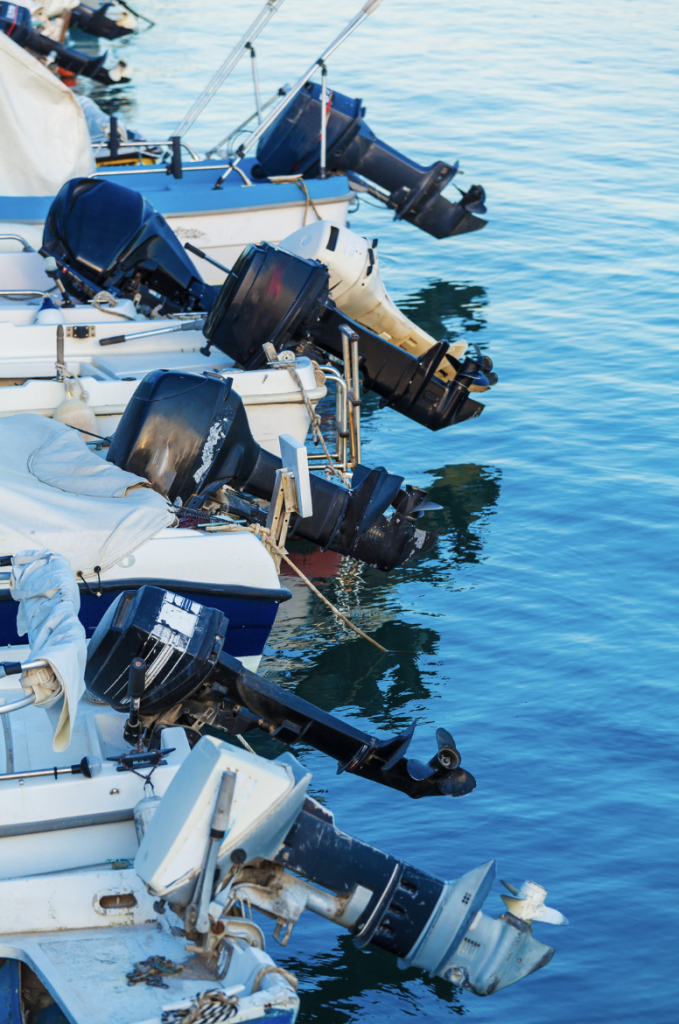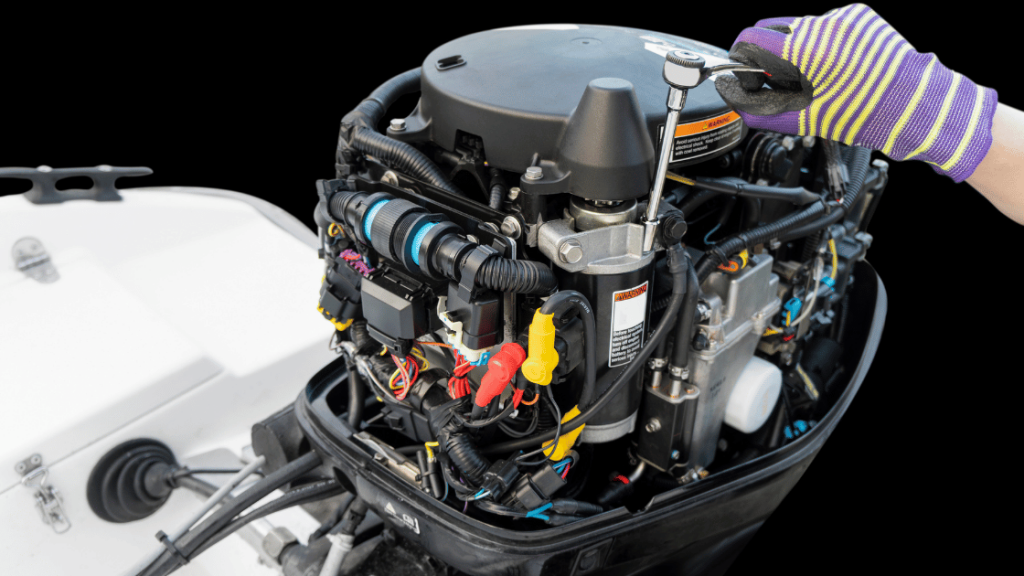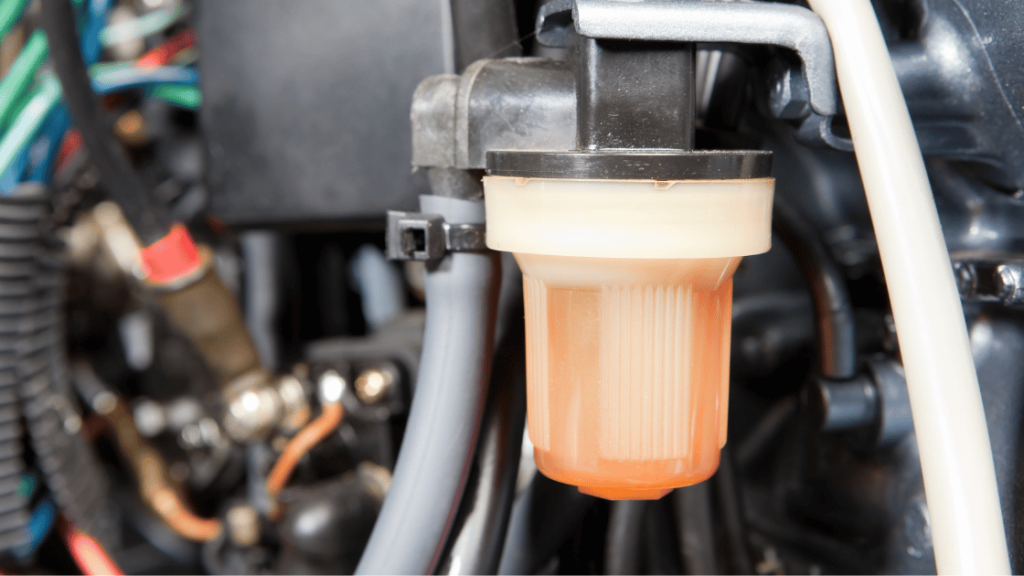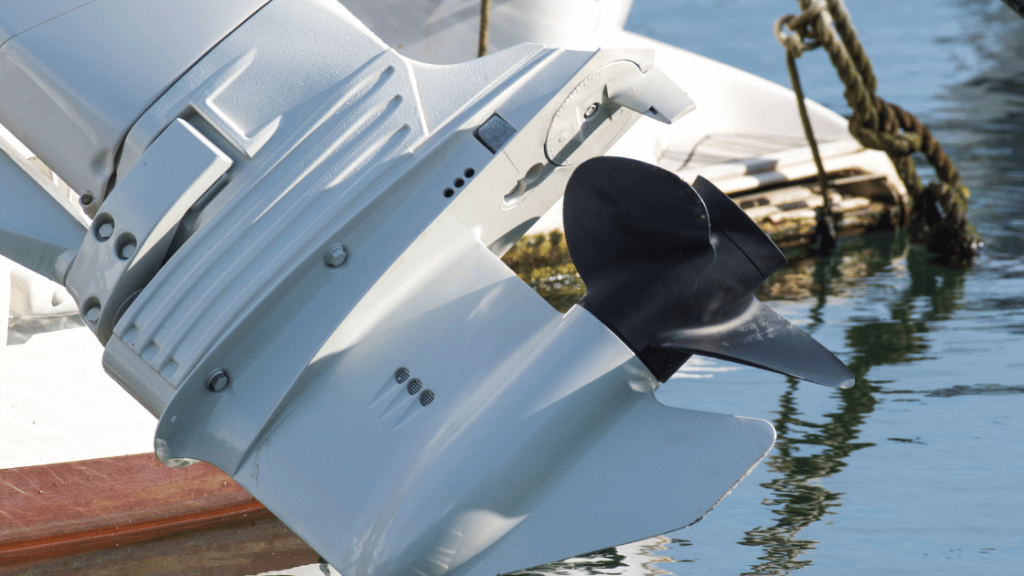Nautical Terminology 101: Outboard Motor Anatomy
December 8th, 2023 by team

by B.J. Porter (Contributing Editor)
Whether you’re a sailor or a power boater, the odds are good you’ll have an outboard in your life. And whether it’s your primary source of propulsion or it just runs your dinghy in to shore, it’s going to take some care.
And like everything on a boat, it has a lot of parts, and they have specific names. Many boaters take the outboard for granted, and don’t pay a lot of attention to the details. But a little time spent familiarizing yourself with your engine and what the various bits do can save you some aggravation.
For this guide, we’re going to get into the exterior names, as well as identify a few parts that need occasional maintenance that you should know about. There are loads of great YouTube videos showing some of these parts in action and getting into greater detail.
Gross Anatomy

An outboard has three major “sections” to it, the powerhead, midsection, and lower unit. All the sections connect, but there are distinctive functional groupings in each one.
Powerhead
The engine is in the powerhead, and it never goes underwater. The engine block, carburetor, spark plugs, ignition wires, and control cables are all inside it. While it is never in the water, water runs through the engine block to cool the engine.
Midsection
The midsection is in effect a tube to carry the various tubes, hoses, cables and shafts between the powerhead and the lower unit. It houses the exhaust, and the mounting bracket for most engines attaches to it. At the bottom of the midsection is the cavitation plate, or anti-ventilation plate.
The midsection is partially immersed during normal operation.
Lower Unit
The lower unit houses the propeller shaft, gearbox, and the propeller. It also has the water intake for cooling the engine, and the skeg. In regular operation, the lower unit is fully submersed. It also has its own oil reserve which must be changed on a regular schedule.
The Powerhead

The outside of the powerhead has the controls, fittings, and ports you’ll regularly use. Inside the powerhead are a few key parts you should be able to identify for basic engine troubleshooting.
Larger outboards with wheel steering and throttle controls off the engine often do not have external controls on the powerhead. Cables control them from a shifter, which may combine throttle and clutch functions into a single lever.
Take the time to trace those control cables to your engine to see where they connect – because your engine still will have these controls, but they’re managed by cables run into the cowling.
External Powerhead Names & Parts
Note: Not every engine will have every part, and larger engines sometimes may be quite different from small, portable outboards.
Parts and Holes
Cowling or Cowl – the engine cover, which usually latches on with a locking handle on the back of the engine. There’s usually a grab handle on the back top of the cowling to help tilt the engine out of the water. There are usually air intake vents by that handle, which can stall your engine if blocked.
Pilot water hole – or just water hole, this is for cooling water outflow. There should always be some water coming out when the engine is running.
Flush Plug – you may have a plug for freshwater flushing your engine with a hose instead of using “earmuff” adapter on the water intake. It may need an adapter to connect to a garden hose, if one didn’t come with the engine.
Oil drain plug – some larger outboards may have an exterior drain plug to help with oil changes.
Fuel connector – smaller outboards with external tanks have a snap-in connector to connect the line from the tank. Larger engines may have an external fuel line with a connector on the end for connection in the boat.
Controls
Tiller – outboards without wheel steering will have a tiller arm, but most larger engines do not.
Throttle – this controls the engine speed, like the gas pedal in your car. For smaller engines, it’s often on a handle control at the end of the tiller. Tiny engines may have the throttle on the powerhead.
Clutch Handle – used to switch the engine from Forward, Neutral, and Reverse. Some smaller engines only have neutral and reverse. It’s often on the side of the engine.
Choke – used for starting a cold engine, pulling the choke out increases the fuel-to-air ratio in the carburetor. Normal running position for the choke is in (or “off”), but different engines will use different choke settings to start in different air temperatures.
Power Trim/Tilt – or “PTT,” on engines with power lifting, there’s often a control on the powerhead.
Pull handle/Start handle – on the front of most manual start engines, gives you a grip on the pull cord for manual starting.
Internal Powerhead Things You Should Be Able to Identify
When your engine won’t run, the first thing many people do is open up the cowl and have a look. But like opening the hood on your car, if you do not know what you’re looking at, there’s very little you can do but shake your head. Detailed fixes are for another article, but a few quick checks of these parts can solve some problems.
Carburetor – the carburetor mixes air and fuel to supply the engine. It’s usually on the front of the engine, and may have a plastic air filter cover over it. The linkages for the choke and throttle attach to it, so if you can’t find it, wiggle one of them and see where the linkage rod leads. Blockages or dirty carburetors cause many outboard problems, and a carb cleaner spray may fix them.
Larger engines may have one carburetor per cylinder, but fuel injected engines don’t have any. EFI or DFI are terms that can tell you your engine is fuel injected.
Spark plug – Each cylinder has a spark plug to ignite the gasoline vapor and air. These should be clean, with no rust or corrosion. If you pull one out, it should not have built up carbon or wear on the end – replace it if it does.
Ignition wire – these run to each spark plug, and pass the power to spark the plug. They should snap tightly to the plug and have no breaks or visible damage. A loose ignition wire can cause an engine to skip or stall.
Midsection

The midsection is primarily a protector for connecting gear, and can vary in length. The difference between a “short shaft” and “long shaft” outboard is an extension section between above the lower unit, with longer rods, cables, and tubes inside it.
Mounting bracket – to hold the outboard to the transom.
Cavitation plate – or anti-cavitation place, or anti-ventilation plate. This flat piece of metal prevents “cavitation” – air getting sucked into the propeller blades, which de-powers the blades when they bite into air bubbles instead of water.
Idle exhaust port – in the back of the midsection, this allows exhaust to escape when the engine is idling. Most exhaust comes out through the propeller, underwater, to reduce noise. But at low speeds and RPMs, there may not be enough pressure to push the exhaust out against the water.
Sacrificial zincs/Anodes – there may be one or more zincs on the midsection to protect underwater metals from galvanic corrosion. The bottom of the cavitation plate is a common location for one. Replace these as they wear or during annual service.
Lower Unit

The inside of the lower is the clutch/shifting mechanism, which lets you run your engine in forward or reverse. It also has several holes and ports you should know.
External hardware and ports
Propeller – the bladed bit that spins and makes the boat move! Propellers are available in different sizes and levels of thrust. The two basic dimensions are diameter and pitch. The pitch refers to how far the propeller should push the boat forward with one revolution of the propeller. Higher pitch equals more top speed but less thrust. Lower pitch gives you more power for a better “hole shot” getting on a plane, but has a lower top end speed. These numbers are stamped on the propeller somewhere, but you rarely need to change from the factory propeller on small engines. The end of the propeller is open and is the exhaust outlet under the water.
Skeg – the fin at the bottom of the lower unit. It provides stability when turning, and some protection against grounding.
Trim tab – a small fin at the back of the cavitation plate, to help with water flow and stability.
Gear oil drain plug – plug to drain gear oil from the lower unit. Note this gear oil is absolutely not the same oil you put in the engine.
Gear oil level plug – fill plug at the top of the lower unit oil reservoir.
Water intake hole – intake for raw water to cool the engine. There are often one on each side. This is what you cover with flushing “earmuffs” to flush the engine.
More zincs and anodes – there will be more. Know them on your own engine!
Internal/Hidden parts
Propeller shaft – this is a keyed shaft for the propeller. It spins to turn the prop.
Shearing pin – a sacrificial metal pin designed to break off and minimize propeller damage if you hit an underwater object. Some manufacturers (like Yamaha) use a pressed-in rubber mounting instead of a pin. Carry a spare.
Forward/Reverse gears – inside the lower unit on the propeller shaft are two gears and a clutch dog. It’s a clever system to allow your engine, which only spins in one direction, to spin your propeller either way. But it’s very important to always stop in neutral for a moment and never slam your outboard between forward and reverse without allowing it to slow in neutral for a second or two.
Here’s a great video explanation of how clutch works. You can see the metal pieces you might break moving the clutch back and forth without pausing in neutral.
Fuel System
Many engines under five horsepower have internal fuel tanks, but larger engines will have an external tank and need to get fuel from the tank to the engine.
Fuel tank – generally a red plastic tank if not built into the boat.
Tank vent – small tanks have a closable vent, usually in the tank fill cap. This should be open when running, but closed when you leave the boat.
Fuel line – rubber hose from the tank to the engine, with special locking connectors on each end and a primer bulb in the middle.
Primer bulb – used to push fuel into a cold engine when starting, squeeze until it’s firm. It has a check valve inside it to hold fuel pressure, and if this breaks, the engine will not run properly.
Fuel connectors – special fittings on either end of the fuel line, one end for the engine, the other to connect to the tank. Engine makers often have their own style, but you can change the fitting to the tank.
- Posted in Blog, Boat Care, Boating Tips, Cruising, Fishing, iNavX, Navigation, Sailing, Sailing Tips
- 2 Comments
- Tags: Boat, dinghy, motor, outboard, outboard motor


December 12, 2023 at 8:13 pm, Michael Jannone said:
Excellent article. Is it normal for water to come out of the idle exhaust port. Your reply would be helpful
December 18, 2023 at 3:58 pm, B.J. Porter said:
For most engines when idling, some water coming out of the idle exhaust port is pretty normal. It’s there above the waterline so the exhaust can get out without the back pressure of the through-prop exhaust.
At speed, that back pressure is reduced and the exhaust pressure is higher.
On some engines it can also act as a pressure relief, and water may come out at high speeds as well.